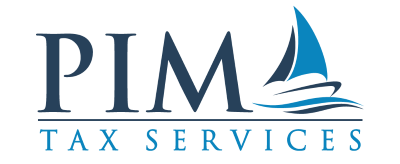I told one of my sons I was writing about interest tracing and his response was, “I know both those words, but I don’t know what they mean when you put them together like that.” Like many things in the tax law, this is one of those concepts that doesn’t seem important to know until it applies to your personal tax situation. The strange thing is the rules for interest tracing apply to many more tax payers than you’d think, most just don’t realize it because they fall into special exceptions to the rules. Some of the recently proposed tax law changes could bring interest tracing to the surface for more tax payers – especially real estate investors – so I thought I’d get a head start on it.
Interest tracing rules involve the deductibility of loan interest expenses from your taxes. Some loan interest is deductible. The most commonly deducted loan interest is the mortgage interest from a tax payer’s primary residence. Some loan interest is not deductible. Interest payments on loans for your personal car fall into this non-deductible category. Many people are familiar with these common examples, which sets up the misconception that how you borrow the money determines its deductibility. Actually, it is (normally) just the opposite.
Under current tax law, how you spend the money is (nearly always) more important than how you borrowed the money. Most people believe the IRS cares more about the collateral used to secure the loan than how the money is spent. The bank (lender) cares a lot about collateral, but the IRS cares more about where the borrowed money ends up. The reason most people don’t know this is because a common way they typically borrow money and deduct loan interest (using their home as collateral) are the exceptions to the rule.
The Internal Revenue Code (Section 163) defines 5 types of interest:
• Qualified residence interest (mortgage interest on your residence and one vacation property)
• Business interest (money borrowed to support a business)
• Passive activity interest (interest on rental properties)
• Investment interest (money borrowed to purchase stocks or bonds, margin interest)
• Consumer interest (personal stuff – generally not deductible)
The General Rule
The general rule is the deductibility of the loan interest is a function of where the money was spent. As long as everything stays in its lane there is usually no confusion about this. For example, I borrowed money to purchase my residence, using the house as collateral for the loan. I deduct my qualified residence mortgage interest from my taxes as a personal deduction on Schedule A – simple and straightforward. Or…
I purchase a rental property with a loan using the rental property as collateral for the loan. I can then deduct the interest on that loan as a business expense on Schedule E of my tax return – also simple and straightforward.
Where things can get messy is when you ‘cross the streams’. Let’s look at some examples.
Example 1. I have a rental property worth $200,000 and my current mortgage on that property is $100,000. I refinance the property for $150,000. I use $100,000 of the new loan to pay the old loan. Then I take the extra $50,000 and buy a boat for my personal use. Can I deduct all the interest on the loan on my Schedule E?
No. When we trace the interest we find that 2/3 of the interest (interest on $100,000 of the $150,000 refinance loan) is used to finance the rental property (passive activity interest) and 1/3 was used for my boat (consumer interest). I can only deduct 2/3 of the interest on that loan on my schedule E. The $50,000 I spent on my boat has no connection to my rental property business and is not deductible on my taxes.
Example 2. Same as above. I owe $100,000 on my rental property and refinance for $150,000. I use the additional $50,000 to pay down the mortgage on my primary residence. I can deduct 2/3 of the interest on my Schedule E, but can I deduct the interest on the $50,000 I put into my personal residence?
No, you cannot. That $50,000 was not spent on the rental property, so it is not deductible on schedule E. While interest paid on a primary residence or second home can be deductible, the loan must be secured by the primary residence or a second home to be deductible on Schedule A. (This is the rare case where the IRS cares about collateral.)
Example 3. Same as above. I owe $100,000 on my rental property and refinance for $150,000. This time I put the extra $50,000 in my brokerage account and buy some mutual funds. Again, I can deduct 2/3 of the interest on my Schedule E, but can I deduct the interest on the $50,000 I invested in mutual funds?
The answer is ‘sort of’. Investment interest is deductible to the extent of investment income. If you had no investment income, you cannot deduct the investment interest. Unused investment interest deductions can be carried over to the next year’s return, so you’ll eventually get to use it (if your investments eventually make money), but it might not be this year. (The really bad news here is that if your investments lose money you suffer a double hardship of negative investment income and non-deductible interest. Investing in securities with borrowed money is not something I recommend.)
Example 4. I buy a new printer/scanner/fax machine for PIM Tax Services using a credit card. If I pay interest to the credit card company for that purchase is it deductible from my taxes?
Yes, this is a valid business expense. The interest for business-related purchases is deductible as a business expense on my Schedule C (or business return such as 1065, 1220S, or 1120.) The problem becomes proving the interest paid was for business expenses. This is nearly impossible if you put business and personal expenses on the same credit card, so keep them separate!
The Exception to Interest Tracing
Readers should be aware the tax law signed by the President on 22 December 2017 changed the deductibility of home equity loans.
Tax payers can borrow up to $100,000 in a home equity loan using their primary or second residence as collateral, spend it on anything they want, and deduct the interest on Schedule A as a personal deduction.
Example 5. I take out a home equity loan on my primary residence for $50,000 and buy a boat. Can I deduct the interest on the home equity loan from my taxes?
Yes, I can deduct this on schedule A as a personal itemized deduction.
Example 6. I take out a $200,000 home equity loan on my primary residence and buy a really big boat. Can I deduct the interest on the home equity loan on my taxes?
Partially. I can deduct the interest on up to $100,000 on a home equity loan. The other half is not deductible.
Example 7. I take out a $90,000 home equity loan on my primary residence and use it to purchase a rental property. Can I deduct the interest on the home equity loan?
Yes. Be careful here, though, because there are two legal ways to deduct this interest. You can deduct it on schedule A as a personal itemized deduction, or you can deduct it on Schedule E as a business deduction from your rental property. While either is legal, one may well prove to be more advantageous than the other. For example, if you have passive losses, but your adjusted gross income is too high to deduct passive losses, you may want to deduct the interest on Schedule A. In other situations it may be more advantageous to take the deduction on Schedule E as that will tend to lower your AGI, which can make you eligible for other tax benefits.
Taxes are definitely not easy, and interest tracing rules don’t make them any easier. If you have a situation where you aren’t sure if or how to deduct your interest expenses, please contact me. I’m just nerdy enough to enjoy an interest tracing discussion every now and again.


